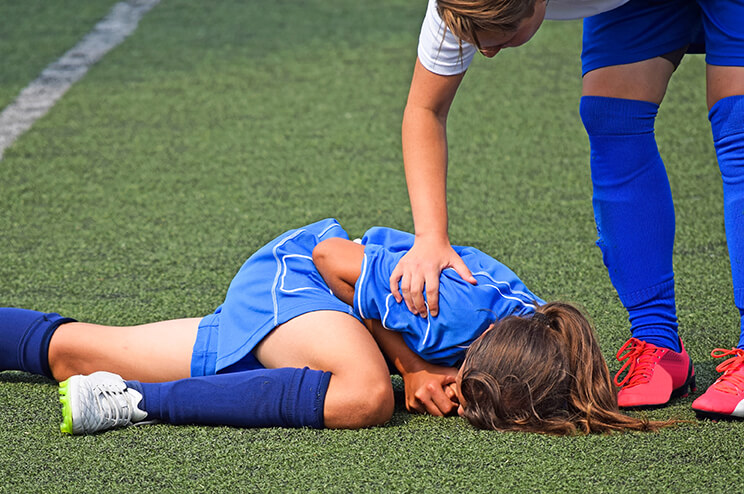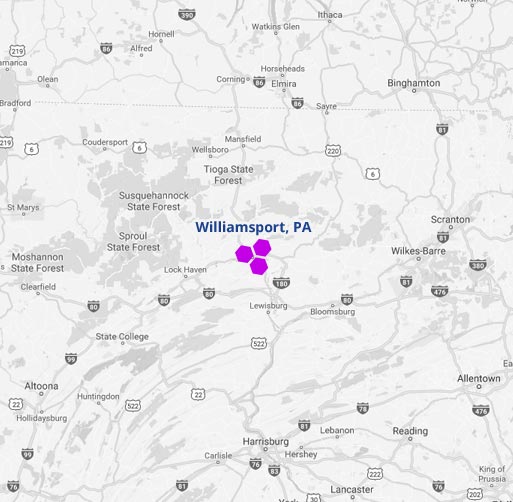Home » Sports Injury Treatment in Northeast PA
Sports Injury Treatment in Northeast PA
Shortening the Recovery Time After a Sports Injury

Playing sports can have a significant toll on your body. Broken bones, tendon tears, and overused muscles can sideline even the most physically fit athlete and take months to heal. An athlete could be facing a long road to recovery if the injury is severe enough.
Many professional athletes are now turning to regenerative medicine to help speed up the healing process. Therapies such as platelet-rich plasma and stem cells are minimally invasive, safe to use, and have shown to be effective in healing sports injuries.
Common Types of Injuries: Acute vs. Chronic
Sports injuries can be broken down into two types – acute and chronic:
- When a sudden, traumatic event happens, like a football player being slammed to the ground, you may get an acute injury. Treatment for acute injuries involves R.I.C.E. – rest, ice, compression, and elevation. The symptoms of the trauma usually subside after a few weeks.
- Chronic injuries, however, can take months, even years, before they fully recover. Acute injuries happen suddenly, like a fall, whereas chronic injuries develop over time. They are also caused by repetitive motion, or using a body part too much. Examples include tennis elbow and runner’s knee.
While chronic injuries are not as disabling as acute injuries, many athletes choose to live with the pain rather than seek medical help. You may think you suffer from a common injury, but that’s no reason to suffer even a dull ache without help.
Commonly Affected Areas by Acute or Chronic Injury
Sports injuries can affect many different parts of the body. However, some areas are more often hurt because of physical activities. Here are the areas most frequently affected:
- Knees: Injuries like ACL tears, meniscus tears, and patellar tendinitis are common due to the stress placed on the knees during activities like running, jumping, and pivoting.
- Ankles: Sprains and strains are frequent, especially in sports that involve a lot of running or quick changes in direction.
- Shoulders: Rotator cuff injuries, dislocations, and strains often occur in sports that require overhead movements, such as swimming, tennis, and baseball.
- Elbows: Conditions like tennis elbow and golfer’s elbow are common due to repetitive motions.
- Wrists: Fractures and sprains can happen in sports that involve falls or direct impact, such as skateboarding or snowboarding.
- Back: Strains and herniated discs can result from sports that involve heavy lifting or twisting motions.
- Head: Concussions are a significant concern in contact sports like football, soccer, and hockey.
- Legs: Hamstring strains, quadriceps injuries, and shin splints are common in running and jumping sports.
- Feet: Plantar fasciitis and stress fractures can occur in sports that involve a lot of running or jumping.
These acute or chronic injuries can vary in severity and often require different approaches to treatment and rehabilitation.
PRP Therapy for Sports Injuries
Platelet-rich plasma therapy has the potential to treat many of the symptoms of both acute and chronic sports injuries. It is a minimally invasive treatment with little to no downtime. Research has shown that PRP therapy can help repair tissue, reducing the need for surgery and other painful medical procedures.
For example, a rotator cuff injury can take six months to regain a full range of motion, shoulder strength, and function. In some cases, surgery is required to fix the injured area, which can sideline an athlete for almost a year. However, research has shown that using PRP therapy on partial tears and inflammation in the rotator cuff has proved to be effective in cutting down the healing time and helping alleviate symptoms.
Stem Cell Therapy for Acute or Chronic Injuries
Stem cell therapy has also proven beneficial in healing past injuries or arthritis, especially if you still suffer from chronic pain from damage to your ACL, MCL, or knee meniscus. By injecting adult stem cells into the affected area, it can potentially regenerate the damaged tissue and treat multiple types of injuries. And like PRP, the therapy is minimally invasive and has little to no downtime.
These treatments can help you avoid risky surgery for common types of injuries, relieve your pain, and have no known adverse effects on patients.
Learn How Northeast Knee & Joint Institute Can Help!
Don’t leave with a dull ache in your knee; get help. At Northeast Knee & Joint Institute, we use the latest regenerative medicine techniques to help our patients return to a pain-free life. We will advise you on what your best options are and will help you in any way we can.
If you have a chronic or acute sports injury and want an alternative to physical therapy and surgery, Northeast Knee & Joint Institute may be able to help! Contact us today to schedule a risk-free, no-obligation consultation with our physician today! Medicare and most insurances are accepted.

